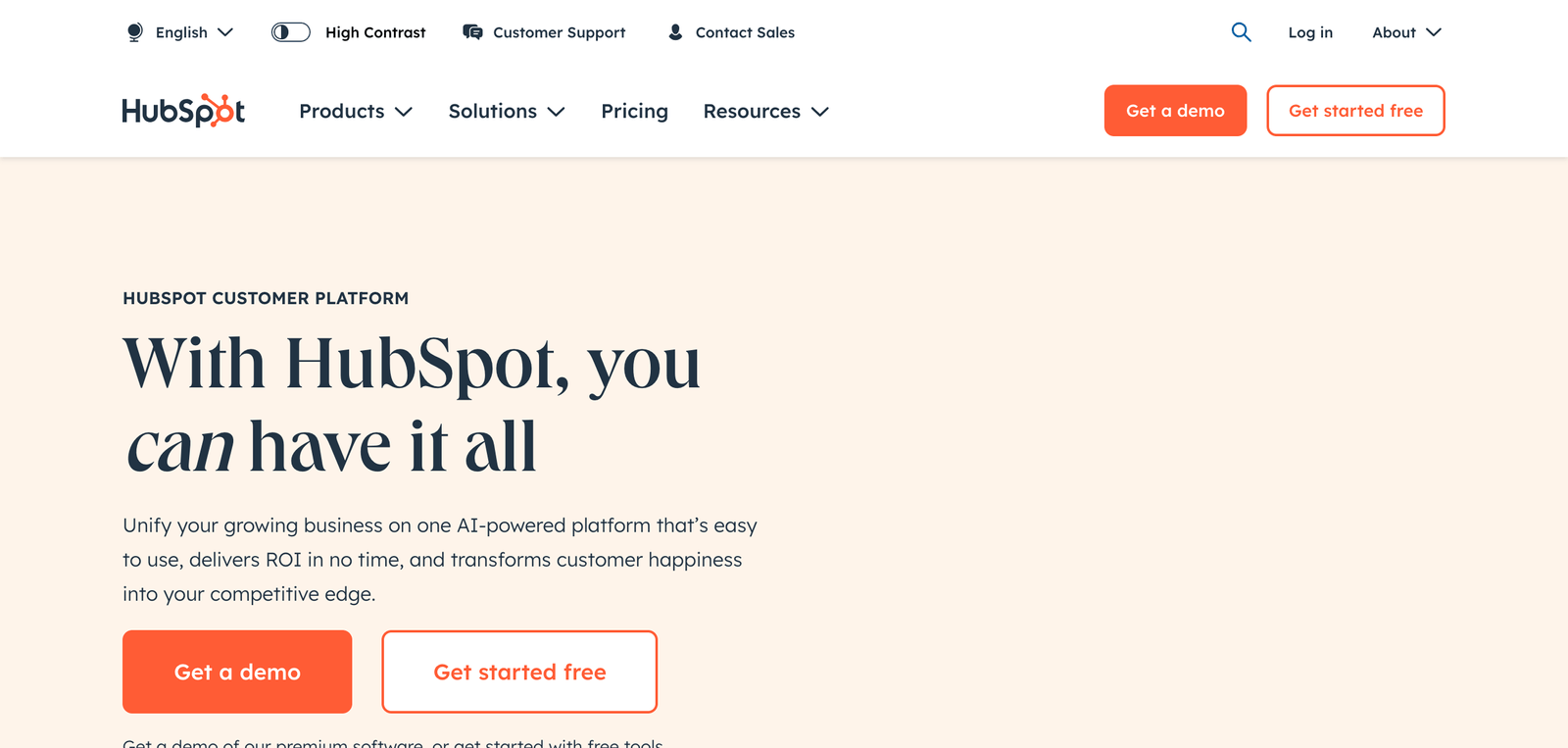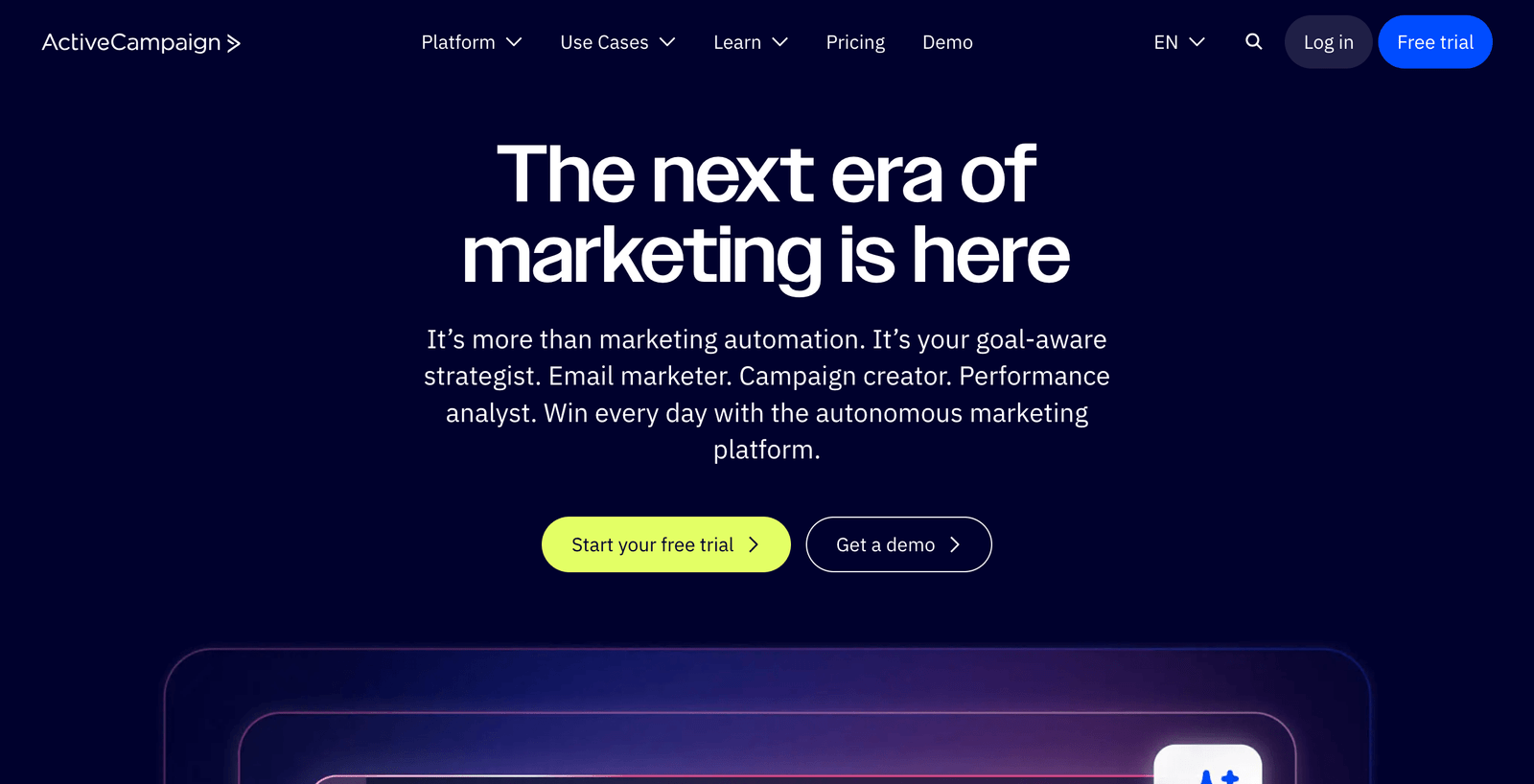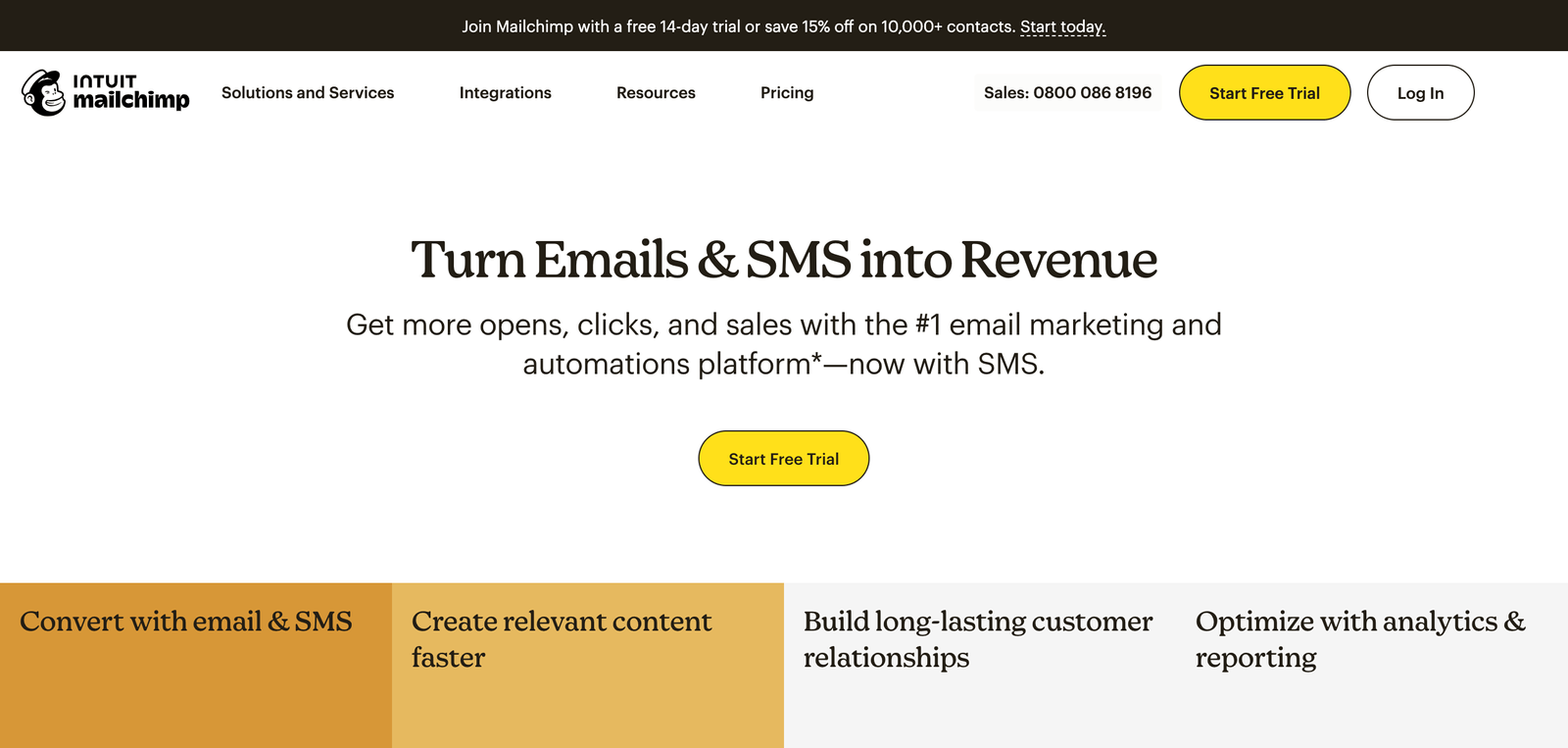Client acquisition in accounting is getting harder. Prospects expect personalized communication. Manual follow-ups are eating up billable hours. And the old “wait for referrals” approach? It’s not bringing in enough new business anymore.
But here’s what hasn’t changed:
If you have the right marketing automation system, you can still win new clients consistently — across email campaigns, social media, and direct outreach.
Not by spamming prospects, but by delivering valuable content at the right time, nurturing relationships systematically, and focusing on what drives actual conversions.
The best marketing automation platforms help you do exactly that:
- Segment prospects based on their specific accounting needs
- Deliver targeted content that addresses their pain points
- Track engagement and prioritize the hottest leads
- Build campaigns that convert prospects into long-term clients
These are the platforms my team and I use to drive consistent client acquisition for mid-size accounting firms.
(Most of which integrate seamlessly with CCH software)
The best part?
These platforms work great for firms handling 50-500 clients. No matter your specialization or geographic focus.
My Top Marketing Automation Platforms for CCH Users
- HubSpot: All-in-one CRM and marketing automation with robust CCH integration
- ActiveCampaign: Advanced email automation with CCH data synchronization
- Mailchimp: User-friendly platform with CCH Connect integration for seamless data flow
HubSpot

Best for firms wanting comprehensive CRM and marketing automation in one platform
Pricing: From $45 per month; free plan available
HubSpot consistently appears on marketing automation lists, but for accounting firms, it’s particularly powerful. You can manage your entire client lifecycle in one system — making it a viable all-in-one solution.
But I don’t use HubSpot for everything.
I use the best tool for each task. And HubSpot REALLY excels at lead nurturing and client relationship management.
Sync Your CCH Client Data Automatically
HubSpot’s CCH integration is my go-to for keeping client information synchronized across platforms.
It helps me track client interactions, billing history, and service preferences automatically. And it reveals which marketing efforts are driving the most valuable prospects.
Let’s say you’re targeting small business owners who need tax preparation services.
You can instantly see which email campaigns are generating qualified leads:
Or track which content pieces are driving the most engagement from prospects in specific industries:
And you’ll see which services are most in-demand from your current marketing efforts (in this case, business advisory services might be leading):
I can then segment my audience based on service interest and send targeted campaigns. If a prospect downloads your “Small Business Tax Deduction Guide,” they automatically get added to a nurture sequence focused on tax services.
If a company relies heavily on referrals for new business, this tells me that their marketing automation success is deeply tied to their existing client satisfaction.
Track Your Firm’s Visibility in Local Search
The most powerful thing HubSpot offers for accounting firms is local SEO tracking. Specifically: How is your firm showing up when prospects search for accounting services in your area?
That’s where the HubSpot Marketing Hub for Financial Services comes in.
It tracks your firm across Google My Business, local directories, and review platforms — measuring:
- Local search rankings for key accounting terms
- Review sentiment and response rates
- Website traffic from local searches
- Lead attribution from different marketing channels
- Client satisfaction trends over time
If you’re managing multiple office locations, this is the most comprehensive solution available.
See What Prospects Want Before They Contact You
HubSpot’s behavioral tracking shows you exactly what prospects are interested in before they pick up the phone.
For $50/month per user, you can:
- Monitor which services pages get the most traffic
- Track content downloads and engagement patterns
- Identify high-intent prospects ready for consultation
- Get notifications when prospects visit your pricing pages
It’s not “basic”, it’s focused. And for many accounting firms, it’s exactly what they need to prioritize sales outreach effectively.
It even provides recommendations based on prospect behavior and engagement patterns.
This means you can quickly identify which prospects are ready for tax planning discussions.
Or address common concerns before they become objections.
For example, when I analyzed traffic to our business advisory services page, HubSpot revealed that prospects repeatedly visited our pricing information but rarely converted.
The platform also made a helpful recommendation to solve this problem:
Add clear pricing ranges and service packages to reduce uncertainty in the decision-making process.
That’s the real value here: HubSpot doesn’t just give you data.
It also surfaces patterns from prospect behavior. So you can identify bottlenecks and fix them before they hurt conversions.
Analyze Your Competitors’ Marketing Strategies
I also use HubSpot’s competitor analysis tools to understand how other accounting firms in my market are attracting clients.
For example, when I look at a competitor’s website, I can see their most popular content topics:
This tells me what services are in highest demand in my market.
Each topic also breaks down into subtopics and related search terms.
For example, “small business bookkeeping” might drive 1.2K monthly searches with moderate competition. The difficulty score tells me how hard it would be to rank for that term and whether it’s a viable opportunity for content marketing.
These are all valuable insights that can help me form my own data-driven marketing strategy.
Pros & Cons
| Pros | Cons |
|---|---|
| Comprehensive client lifecycle management from prospect to retention | The wide range of features can be overwhelming for smaller firms |
| Strong CCH integration maintains data consistency across platforms | |
| Built-in CRM eliminates need for separate client management system |
HubSpot Alternative: Salesforce Pardot
Pardot is another comprehensive marketing automation platform. It also provides tools for lead scoring, email marketing, and campaign tracking.
It has a robust, enterprise-focused interface, and my main use case is the advanced lead scoring for complex B2B sales cycles.
Although I also use it for detailed campaign attribution, typically alongside other analytics tools (as every platform’s reporting is different, so it’s valuable to use multiple sources when budget allows).
But overall, HubSpot offers more user-friendly features at a lower price point for most mid-size firms.
It also lets you manage various marketing activities in one platform, including social media, content management, and customer service. Pardot is primarily focused on lead generation and nurturing.
ActiveCampaign

Best for accounting firms that want sophisticated email automation with detailed behavioral tracking
Pricing: From $29 per month; free trial available
ActiveCampaign is my favorite tool for creating complex, behavior-driven email sequences. I can set up automated campaigns that respond to exactly how prospects engage with my content.
It helps me instantly identify which prospects are most engaged, and which ones need different messaging. This makes prioritizing follow-up calls and proposal development so much more effective.
Segment Prospects by Their Service Needs
Service-based segmentation shows me how well my different practice areas are performing. Not just individual campaigns.
For example, if I focus on tax preparation, bookkeeping, or business consulting, I can easily check their engagement rates and conversion metrics.
And I can see each segment’s average email open rates, along with how they’ve changed (whether engagement is improving or declining).
This data shows me which services generate the most interest, helping me plan my content calendar and service offerings.
I can double down on the practice areas that are performing well, and consider refreshing messaging for the underperforming segments.
Track Prospect Engagement Over Time
I check this part of the platform every single day, because ActiveCampaign makes it so easy to spot engaged prospects. You can see who’s opening emails, clicking links, and by how much.
You can also compare different time periods, comparing this month vs. last month, or year over year.
Why is this important?
Because prospect nurturing is never a set-it-and-forget-it process:
A prospect showing increased engagement could indicate growing interest in your services. This gives you the perfect opportunity to reach out with a consultation offer.
And if a prospect’s engagement is declining, you can confirm if it’s seasonal (during busy tax season) or if you might want to try a different messaging approach.
Identify Hot Prospects Ready for Consultation
This is probably my favorite feature of the entire platform. I can just open my browser and instantly see who’s most engaged, who’s actively considering services, and who’s gone cold.
Without wasting time digging through email reports.
When I clearly see which prospects are showing buying signals, I know exactly where to focus my sales efforts.
High engagement is a clear sign that a prospect is ready for a consultation call. Maybe they need immediate tax planning assistance or are looking for a new accounting partner.
And if a prospect suddenly increases their activity, I can see that too:
It’s simple, but so effective.
Pros & Cons
| Pros | Cons |
|---|---|
| Advanced automation workflows that respond to specific prospect behaviors | Setup can be complex for firms without marketing experience |
| Detailed engagement scoring helps prioritize sales outreach |
ActiveCampaign Alternative: Drip
Drip is a marketing automation platform focused on e-commerce, but it works well for service businesses too. It provides behavioral tracking, email automation, and customer lifecycle management.
But one key difference is that Drip is primarily designed for product-based businesses. If you serve primarily service-based clients, checking individual engagement can be more challenging. ActiveCampaign has a unified dashboard where you can see all your prospects’ service interests at a glance.
ActiveCampaign has the edge over Drip by offering more sophisticated automation triggers and better integration options for professional services firms.
Mailchimp

Best for accounting firms wanting straightforward email marketing with reliable CCH data sync
Pricing: From $13 per month; free plan available for up to 500 contacts
Mailchimp is a user-friendly email marketing platform that’s particularly strong for accounting firms just getting started with marketing automation. I’ve been using it for client communication for several years.
Mailchimp’s strength is making email marketing accessible while still providing powerful automation features. It can handle complex client communication workflows while remaining easy to use for non-marketing team members.
I particularly value the CCH Connect integration and template customization options.
Sync CCH Client Data Seamlessly
One of the things I appreciate most about Mailchimp is how smoothly it integrates with CCH software. You don’t have to manually update client information every time you want to send a campaign.
Most of the time, I either run targeted campaigns to existing clients or broader outreach to prospects.
But how do I determine which approach to use?
I have two scenarios:
If I’m doing client retention campaigns (tax deadline reminders, new service announcements), I’ll sync my entire CCH client database. This includes contact information, service history, and billing details.
But if I’m targeting specific client segments, such as small businesses needing payroll services or individuals requiring estate planning, I can filter based on service categories in CCH.
This way, I can focus on what matters most for each campaign. Without sending irrelevant information to clients who don’t need those services.
Create Professional Email Campaigns Quickly
One of the first things I do when setting up a Mailchimp campaign is choose from their accounting-specific templates.
I always customize the templates with my firm’s branding and messaging. This way, I can maintain professional consistency while saving time on design.
This lets me create professional-looking emails without needing a graphic designer, while also ensuring my firm’s personality comes through.
Let’s say I want to remind clients about upcoming tax deadlines. I can select a template, customize it with relevant deadline information, and schedule it to send at optimal times.
Or if I want to announce a new service offering, I can create a template that highlights the benefits while maintaining my firm’s professional tone.
Mailchimp also provides A/B testing capabilities. You can test subject lines, send times, or content variations to see what resonates best with your clients.
Pros & Cons
| Pros | Cons |
|---|---|
| CCH Connect integration keeps client data synchronized automatically | Advanced automation features require higher-tier plans |
| User-friendly interface perfect for accounting professionals without marketing backgrounds |
Mailchimp Alternative: Constant Contact
Constant Contact is another email marketing platform designed for small to mid-size businesses. It provides email templates, list management, and basic automation features.
It has a straightforward interface and offers good customer support. These tools help accounting firms create professional email campaigns without extensive marketing knowledge.
Constant Contact does offer integration capabilities, but they’re not as robust as Mailchimp’s CCH Connect integration. For accounting firms specifically, Mailchimp provides better data synchronization and industry-specific features.
Honestly, I find both platforms suitable for basic email marketing. For firms just starting with marketing automation, they’re both solid choices.
Other Tools I Use in My Marketing Workflow
Managing marketing automation for an accounting firm requires more than just email platforms and CRM systems.
At our firm, we use scheduling, content management, and analytics tools. They help us keep everything running smoothly, even if they’re not specifically accounting-focused marketing tools.
Here’s what we use:
- Calendly for automated consultation scheduling. It syncs with our calendar and reduces back-and-forth email coordination.
- Google Analytics for website performance tracking. It shows us which content attracts the most qualified prospects.
- Canva keeps our social media and email design consistent. It helps us create professional graphics without hiring a designer.
- Buffer helps us maintain a consistent social media presence. We use it to schedule tax tips, industry updates, and firm news across platforms.
There are obviously many other marketing automation platforms available. But these are the ones I recommend trying first for mid-size accounting firms.
A platform with strong CCH integration is essential, as it eliminates double data entry and keeps your client information accurate.
But beyond that, you can add specialized tools to your marketing stack as your needs grow and your client base expands.

